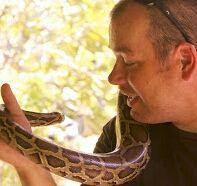Cereal to Stream Tables: Putting Stability and Change in Students’ Hands
By Cindy Workosky
Posted on 2018-06-27
Stability and Change is one of the seven Crosscutting Concepts (CCs) that can be difficult to convey in a lesson. Other CCs like Patterns, Cause and Effect, and Systems and System Models can be easily incorporated in the structure of a lesson. With a little planning, Stability and Change can be frequently demonstrated in a lesson.
Science teachers must remember that Stability and Change is all about conditions and factors: what condition(s) and factors affect stability and lead to a change. This article will focus on weathering and deposition of rock during the rock cycle and how Stability and Change can be incorporated in class discussion following the lesson activities.
The rock cycle is a slow process, but it is all about Stability and Change. During the rock cycle, rocks are ever-changing, but because these changes happen slowly, it can be difficult for students to observe and understand them. To “speed up” geologic time, use household materials to simulate rocks to help students discover the factors and conditions affecting weathering of rock in the rock cycle.
To give my students control of these factors and conditions, , I use breakfast cereal to simulate rock types. Cereal has a much faster “weathering” process, and using it allows students to apply their prior knowledge of cereal to develop questions to explore weathering as it relates to Stability and Change.
In this simulation, students are given eight different cereals. The cereals should vary in the type of grain used, amount of sugar contained, and overall composition. This will allow students to make concrete predictions that can be tested and analyzed.
First, have students research the cereals and make their prediction. Their goal is to predict which cereal will have the lowest percentage loss of matter after the simulation. Students start by calculating the mass of a predetermined amount of cereal, which is then placed inside a PVC pipe and tumbled for a set amount of time or number of shakes. After the weathering simulation, students re-calculate the cereal’s mass to determine the percentage loss.
Stability and Change can be illustrated by having students examine the data. Which cereal had the smallest, or largest, percentage loss? What factors present in the cereal affected the amount of matter lost? What conditions contributed to the weathering of the cereal?
From there, students will generate additional questions. Connecting the results to actual rock types is the final step. Students can make predictions about the activity of rocks based on the factors and conditions they discovered while working with cereal. (This activity could also be done with snack chips, cookies, or even pretzels of different shapes and types.)



One pitfall to avoid is becoming predictable in your lesson structure. In the lesson just described, the discussion about Stability and Change occurred at the end. In the next lesson, the discussion about CCs will occur at the beginning.
Creating and using stream tables allows students to test factors and conditions and focus on the Stability and Change of rocks and deposition. Begin by running a simple stream table so students can identify factors that can affect the amount of deposition in a stream. Students should be able to identify slope, speed of the water, shape of the river, or river materials as possible factors. It is important to allow students to test their ideas, even if you know the idea is not a valid factor.
Before testing, have a conversation about Stability and Change in relation to the factors to be tested. How will the variable change the river? As students test their ideas, they will be able to see, and evaluate, the Stability and Change their factors created. Revisiting their initial thoughts will help students deepen their understand deposition through Stability and Change. This discussion will also help students develop follow-up questions, new factors to test, or connections to previous activities.


How do you incorporate Stability and Change into your class activities and discussion? What innovative methods have you developed to engage your students in the CCs? If you would like to share your classroom activities through pictures and ideas, or get a copy of the lessons described in this article, connect with me on Twitter: @BKd204Sci or @ngssSfocus. The more we share, the more we all grow in our understanding of NGSS and ability to teach them.

Brian Klaft has taught middle school science for 27 years. He currently teaches at Francis Granger Middle School in Indian Prairie District (IPSD) 204 in Aurora, Illinois. Previously he taught in the Chicago Public Schools and South Berwyn District 100. Over the past five years, Klaft has served on IPSD’s science curriculum team, working with other district science staff to align the NGSS to district curriculum. As a member of NSTA’s physics curator team, Klaft curates content on waves and electromagnetic radiation at the middle school level.
Blog Link: https://brianklaft.wordpress.com/
This article was featured in the June issue of Next Gen Navigator, a monthly e-newsletter from NSTA delivering information, insights, resources, and professional learning opportunities for science educators by science educators on the Next Generation Science Standards and three-dimensional instruction. Click here to sign up to receive the Navigator every month.
Visit NSTA’s NGSS@NSTA Hub for hundreds of vetted classroom resources, professional learning opportunities, publications, ebooks and more; connect with your teacher colleagues on the NGSS listservs (members can sign up here); and join us for discussions around NGSS at an upcoming conference.
The mission of NSTA is to promote excellence and innovation in science teaching and learning for all.
Future NSTA Conferences
2018 STEM Forum & Expo
Dive into Three-Dimensional Instruction Workshop
2018 Area Conferences
2019 National Conference
Follow NSTA
Disclaimer: The views expressed in this blog post are those of the author(s) and do not necessarily reflect the official position of the National Science Teaching Association (NSTA).
Crosscutting Concepts Earth & Space Science NGSS Middle School


